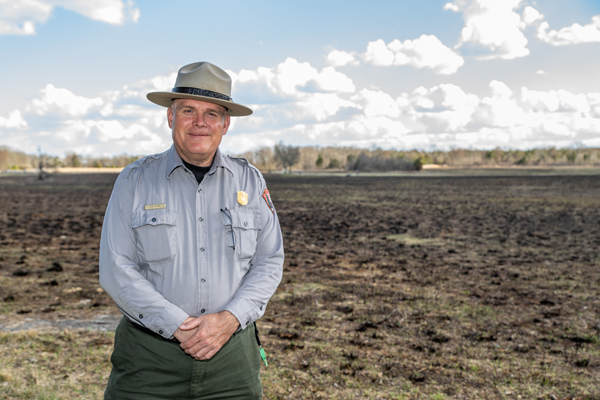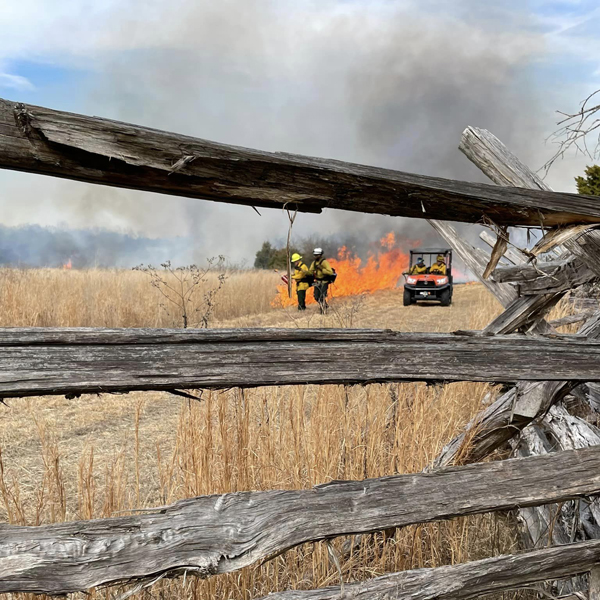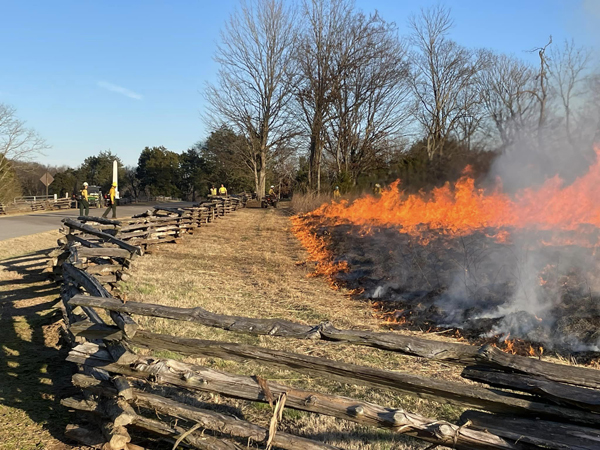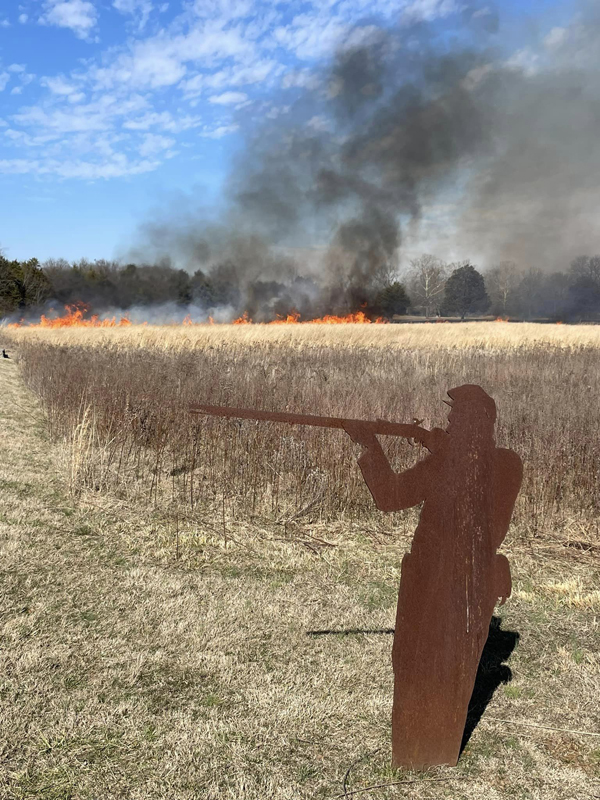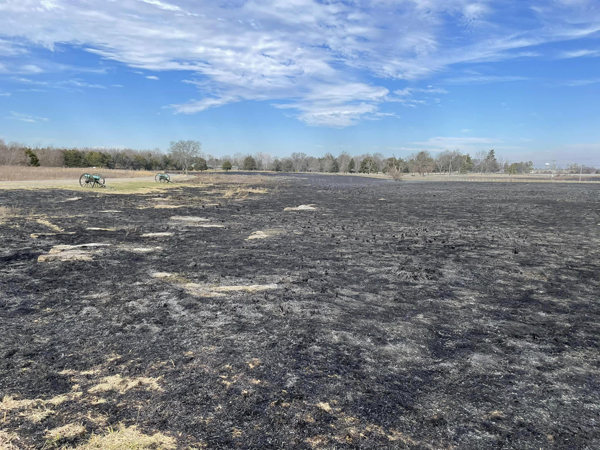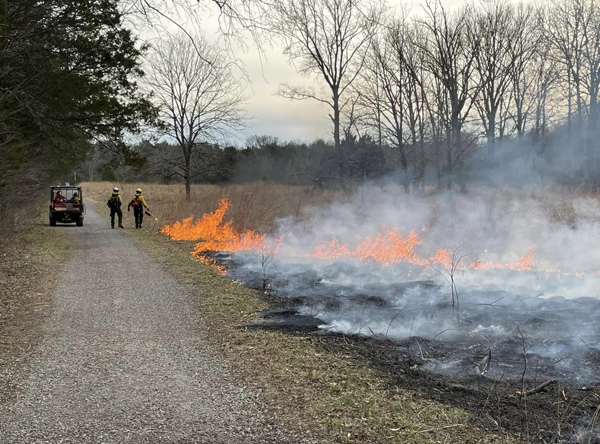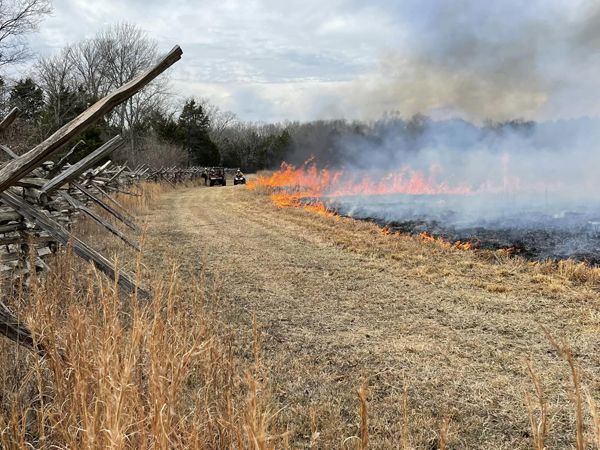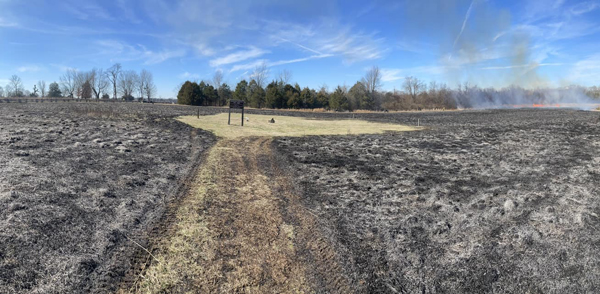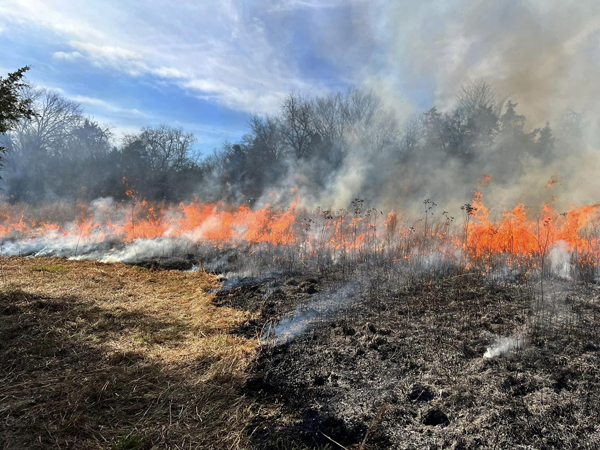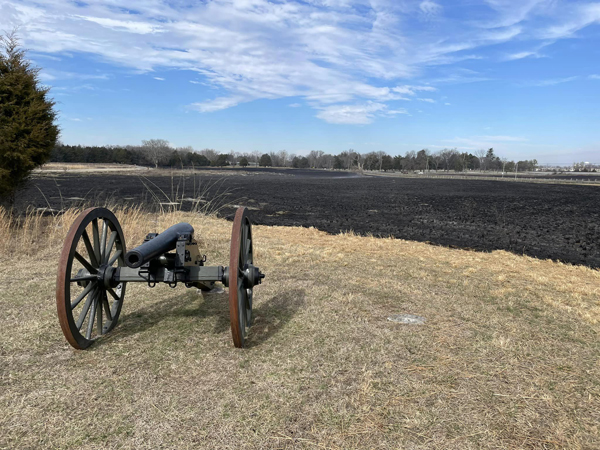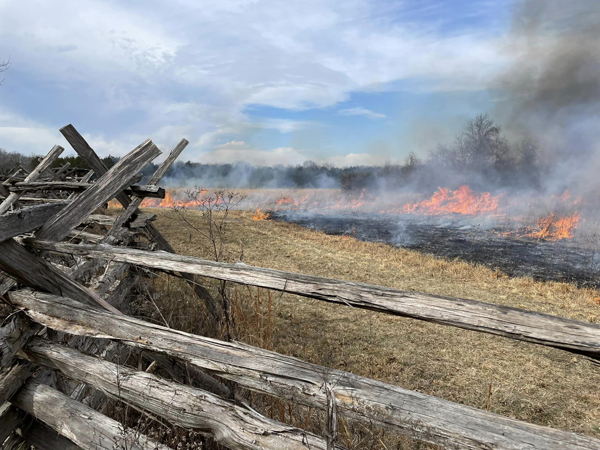
Driving down Old Nashville Highway near Stones River National Battlefield, you might be taken aback by the sight of scorched earth.
Yet, far from a scene of devastation, this prescribed burn represents a carefully orchestrated effort to sustain both history and our native landscape in one of Middle Tennessee’s most cherished historic destinations.
Park Ranger Jim Lewis helps to shed light on the critical role prescribed burns play in safeguarding the battlefield’s ecological integrity and cultural significance.
“Fire is going to do what it is going to do under certain conditions,” explains Lewis, emphasizing the science behind prescribed burns.
These fires are meticulously planned, with factors like wind direction, humidity and fuel conditions forming the basis of a “prescription” that ensures effectiveness while prioritizing safety. Such precision is crucial, particularly in the urban interface of Stones River Battlefield, where the direction of smoke dispersal must be carefully managed to avoid impacting nearby residents and businesses.
“Always our biggest concern is the safety of the public. We are all fire bugs at heart, so keeping people safely away from the fire is our number one priority,” Lewis said.
At the heart of prescribed burning lies a multitude of reasons, ranging from fuel load reduction—reducing the amount of trees and brush in a monitored way before a wildfire breaks out—to biodiversity conservation. By periodically burning native grasslands, invasive species are controlled, and the ash left behind acts as a natural fertilizer, nurturing the growth of native flora. The restoration of these ecosystems not only enhances biodiversity but also strengthens the resilience of the landscape against future threats.
This February, Stones River Battlefield embarked on a three-day prescribed burn, with the operation conducted by the Mississippi River Fire Management Zone, assisted by Americorps veterans and folks from Big South Fork and Cumberland Gap National Parks. Together they tackled some fields that had not seen fire in nearly a decade.
Murfreesboro residents will see scorched fields near the battlefield’s visitor center on the west boundary of the park and at McFadden’s Farm.
Understanding that the sight of a burned natural space can be worrisome to the public, Lewis said, “We have to burn it down to build it back up.”
The impact of prescribed burns extends beyond ecological restoration; it also plays a pivotal role in maintaining the cultural landscape of the battlefield. Open fields, once farmland, now serve as poignant reminders of the Civil War era. By keeping these areas in optimal condition, the park not only preserves historical authenticity but also provides habitat for a diverse array of wildlife, turning the battlefield into a haven for both history enthusiasts and nature lovers.
Monitoring and research are integral components of the prescribed burn program at Stones River Battlefield. Through careful observation, park officials (along with the Mississippi River Fire Management Zone) have documented significant reductions in invasive species and improvements in the health of native flora. Moreover, the relatively low cost of prescribed burns, coupled with the multifaceted benefits, underscores their value as a conservation tool.
Lewis emphasizes the necessity of allowing Mother Nature, fire included, to play its role in maintaining healthy ecosystems. Where public safety is a major factor due to urbanization, efforts like a prescribed burn are made to mimic these natural processes.
As stewards of this national and natural treasure, the park’s commitment to sustainable conservation practices ensures that the flames of history and nature continue to burn brightly at Stones River Battlefield, preserving its rich heritage and ecological health for generations to come.
Photos:
Park Ranger Jim Lewis by Ashleigh Newnes
Burn photos courtesy of Stones River National Battlefield



